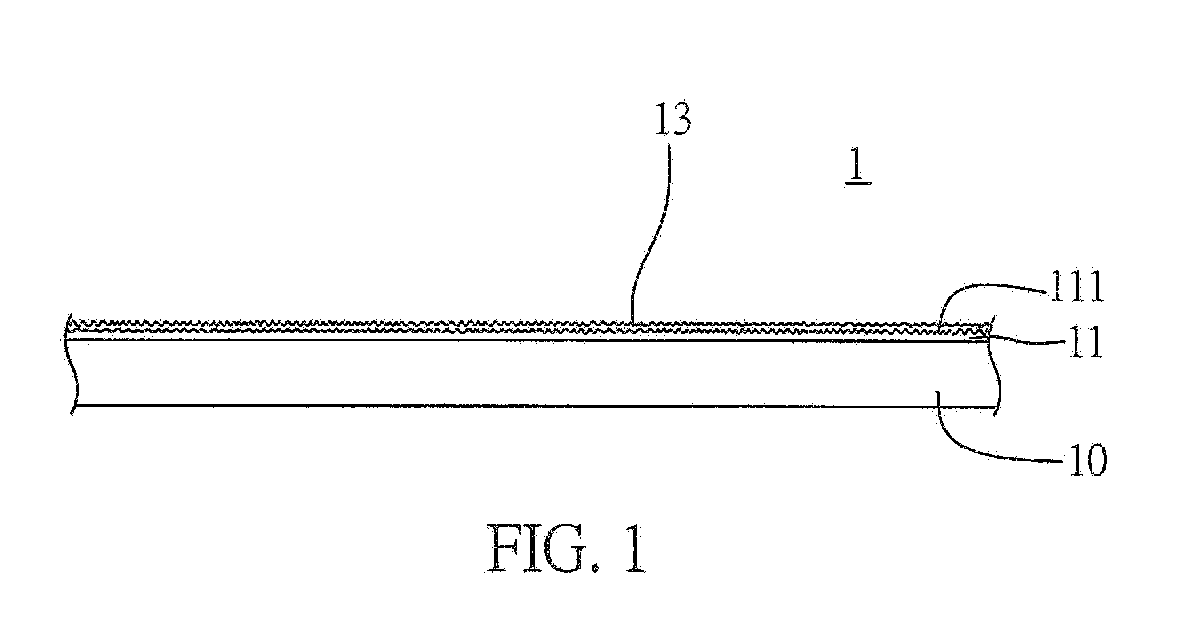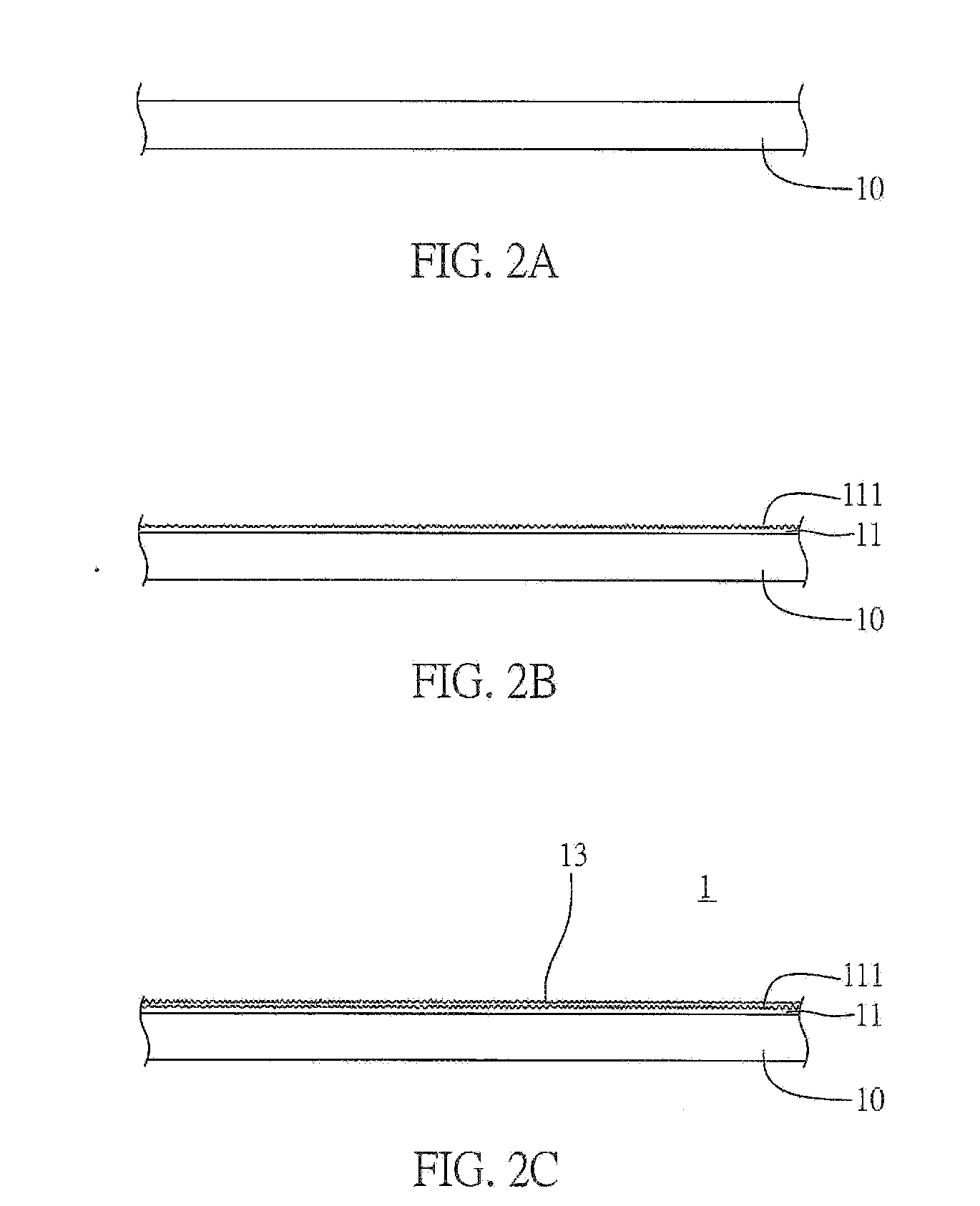Water-Repellent Structure and Method for Making the Same
a water-repellent structure and water-repellent technology, applied in the field of substrate surface modification techniques, can solve the problems of poor adhesion of water-repellent structure, low surface energy, insufficient hardness, etc., to improve hardness and abrasion resistance of water-repellent structure, reduce the thickness of water-repellent structure, and improve the effect of transparency
- Summary
- Abstract
- Description
- Claims
- Application Information
AI Technical Summary
Benefits of technology
Problems solved by technology
Method used
Image
Examples
experiment 1
[0046]FIG. 3A is an Atomic Force Microscope image of the water-repellent structure 1 of the present invention. FIG. 3B is a surface roughness chart of the water-repellent structure 1 of the present invention. An average surface roughness (Ra) is calculated by measuring average height deviations of surface asperities by a profilometer. The hardened coating 11 deposited on the surface of the substrate 10 is formed with the rough surface 110. The rough surface 110 has an average surface roughness (Ra) of about 16.6 nm.
experiment 2
[0047]FIG. 4A is another Atomic Force Microscope image of the water-repellent structure 1 of the present invention. FIG. 4B is another surface roughness chart of the water-repellent structure 1 of the present invention. FIG. 4C is a schematic diagram for a water contact angle test of the water-repellent structure 1 of the present invention showing the water contact angle of the water with the water-repellent structure 1. After the water-repellent coating 13 is formed on the hardened coating 11, the water-repellent structure 1 is formed. At this stage, the water-repellent structure 1 (a surface of the water-repellent coating 13) has an average surface roughness (Ra) of about 9.2 nm and a water contact angle of 115°. Further, the water contact angle of the water droplet on the water-repellent structure 1 can be maintained at 115° after the first seven days of the water contact angle test. Moreover, the water-repellent structure 1 of the present invention also enhances a number of othe...
PUM
| Property | Measurement | Unit |
|---|---|---|
| thickness | aaaaa | aaaaa |
| surface roughness | aaaaa | aaaaa |
| surface roughness | aaaaa | aaaaa |
Abstract
Description
Claims
Application Information
 Login to View More
Login to View More - R&D
- Intellectual Property
- Life Sciences
- Materials
- Tech Scout
- Unparalleled Data Quality
- Higher Quality Content
- 60% Fewer Hallucinations
Browse by: Latest US Patents, China's latest patents, Technical Efficacy Thesaurus, Application Domain, Technology Topic, Popular Technical Reports.
© 2025 PatSnap. All rights reserved.Legal|Privacy policy|Modern Slavery Act Transparency Statement|Sitemap|About US| Contact US: help@patsnap.com



